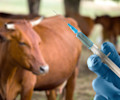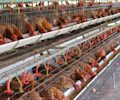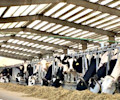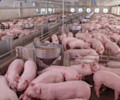The attention of global food sector investors was fixed on a farm near the border of China and North Korea this week, as around 20,000 pigs became the latest victims of African Swine Fever (ASF). ASF is an animal pandemic that is spreading rapidly across Asia and Europe.[1]
ASF is only the latest in an increasingly frequent series of costly outbreaks that include bird flu, swine flu and other pathogens. It is not just animals suffering the consequences of ASF. Investment portfolios and economies across the world are susceptible to its impacts.
The 2015 outbreak of H5N2 bird flu in the US was estimated to have caused losses of $3.3bn for the nation’s poultry sector[1], while the H7N9 bird flu outbreak in 2013 is estimated to have cost the Chinese economy $6.5 billion.[2]
The root of the problem is that big animal protein producers rely on close confinement of farm animals, tend to have opaque supply chains, and often lack effective traceability. These three characteristics provide optimal conditions for the rapid proliferation of diseases such as ASF.
Value at risk from export bans and soaring prices
ASF is a lethal, highly contagious virus and at this stage is not preventable or treatable. The outbreak has already led to the destruction of 300,000 pigs in China and Europe since August in an attempt to stop the spread.[3]
Consequently the Chinese pork trade has slowed, and international buyers are beginning to feel the squeeze on supply. Several governments have embargoed pork imports from countries with evidence of disease outbreaks. At time of writing 13 nations have banned pork products from Belgium, while a number of Asian nations have also banned imports from Latvia, Poland, Romania, Russia, Ukraine and Bulgaria.
ASF has largely been a Chinese and European issue so far, leaving the Americas unaffected at time of writing. However, analysts estimate that if the virus manages to reach the US an export ban of US-based pork products could result in an $8 billion loss in revenue for the US pork industry. If reverberations through the supply chain are considered, the figure reaches $13.5 billion[4].
Economic pressures mounting
The ASF crisis has also resulted in significant upward pressures on pork prices in affected parts of China. The country’s index of national pig prices has increased by 6.4% since the first case was reported[5], with pork prices rising by as much as 40% in eastern and southern China, due to transport bans[6].
Given China’s large consumption of pork, such price increases are in turn driving mounting inflationary pressure and so undermining demand (both domestically and for export) and putting economic stresses on the entire pork supply chain.
Such stresses have significantly affected the world’s largest pork producer, Chinese-owned WH Group. One of WH Group’s slaughterhouses was forced to close for six weeks after an ASF outbreak killed several pigs on the premises. As a result, the shares of the company’s stock dropped 10%[7] over the period. From a high of almost 9 HKD (Hong Kong dollars) in May, WH Group’s share price now continues to languish around the 6HKD mark (correct at time of writing).
A ticking time bomb
The concentrated conditions of factory farming mean that ASF is unlikely to be the last animal pandemic of this nature. By rearing an enormous number of animals in confined, poorly-ventilated facilities, intensive animal production systems create the ideal incubating environment for disease.
This risk is particularly acute in China. The nation currently has few regulations on livestock welfare and disease management. Accordingly, many Chinese producers do not disclose their biosecurity processes, leaving investors in the dark over crucial quality and safety controls.
Stay aware of evolving risks
What can investors do?
Tools like the Coller FAIRR Protein Producer Index are helping investors to better identify ESG risks such as ASF before they happen. Our findings in May identified WH Group as ‘high risk’ on animal welfare and use of antibiotics, signalling the need for a cautious approach to holding its stock.
We encourage all investors to use tools such as the Coller FAIRR Index to be aware of evolving production risks in the protein production space.
References
[1] https://www.reuters.com/article/us-china-swinefever/china-agriculture-ministry-says-72-pigs-dead-in-new-african-swine-fever-outbreak-idUSKCN1MM117
[2] https://www.reuters.com/article/us-birdflu/chinas-bird-flu-outbreak-cost-6-5-billion-idUSBRE94K0ZQ20130521
[3] https://www.wired.com/story/african-swine-fever-scientists-should-track/
[4] https://www.porkbusiness.com/news/hog-production/chinas-battle-african-swine-fever-far-over
[5] https://www.bloomberg.com/news/articles/2018-09-17/swine-fever-mystery-threatens-china-s-128-billion-pork-industry
[6] https://research.rabobank.com/far/en/sectors/animal-protein/African_Swine_Fever_Shifts_Global_Protein_Picture.html
[7] https://uk.reuters.com/article/china-swinefever-pigs/wh-group-shuts-china-slaughterhouse-for-6-wks-after-african-swine-fever-discovery-idUKL4N1V80BU
FAIRR insights are written by FAIRR team members and occasionally co-authored with guest contributors. The authors write in their individual capacity and do not necessarily represent the FAIRR view.











